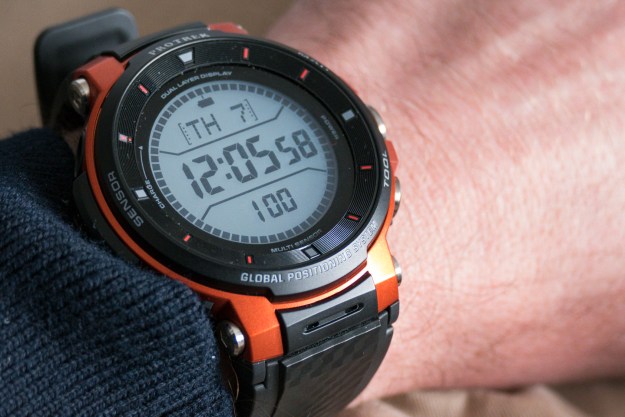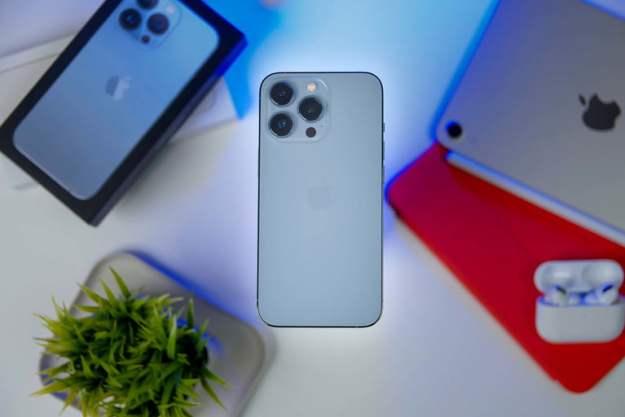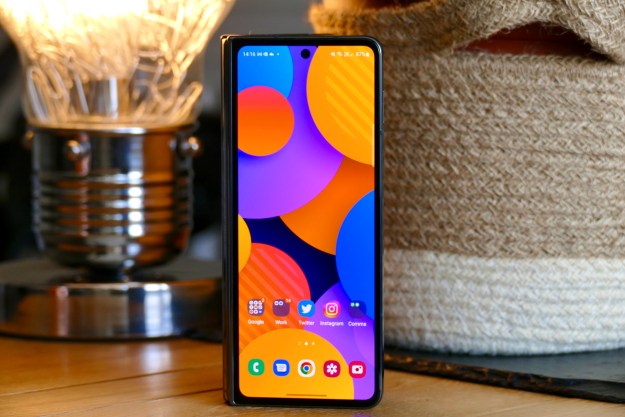
“The Casio Pro Trek WSD-F30 outdoor smartwatch wins if you live the lifestyle, or just love the look.”
- Comfortable and stylish
- Range of sensors and tools for outdoor use
- Good battery life, with extended modes
- Second LCD screen works well
- Wide-range of apps compatible with the watch
- Expensive compared to some rivals
- Charger is proprietary, and not very secure
- Wear OS can be buggy, still needs work
Shaving 4mm off anything doesn’t sound like very much. Reducing the length of a car by 4mm, for example, would not make any appreciable difference. But when Casio cut it away from the WSD-F20 Pro Trek smartwatch’s case to make the WSD-F30 Pro Trek Smart, it made a considerable difference to the wearability and style, without sacrificing any technology.
Its predecessors haven’t captured the general public’s attention, and while the WSD-F30 retains a similar style and functionality to them, the alterations show Casio has learned from old versions, evolving the new Pro Trek to become a lifestyle wearable that’s still capable of keeping up with those who actually live the outdoor life too.
A big watch
Before I go any further, I should say that while the WSD-F30 definitely looks more at home on most wrists than the WSD-F20, it’s still a big watch. The case is 53mm wide, and on small wrists the lugs will hang over the edge in a way that some may dislike or find uncomfortable. The strap, which is attached to the body using quick-release pins, has many holes in it, so it can fit many wrist sizes.
It’s comfortable and doesn’t get sweaty or itchy. Like many other Casio watches, the size means it’s tough, and the Pro Trek WSD-F30 meets military standards, plus it’s water resistant to 50 meters, even though it has a microphone for Google Assistant. It’s impressive.
The watch’s bold design is tailored to those who embrace the outdoor lifestyle. Not in a utilitarian way though, and the WSD-F30 is suitable for everyday wear, especially in either the beautiful blue color, or the orange. A standard black version is also available, but it’s a little faceless. It’s 83 grams in weight, but does not overpower the wrist. I’m genuinely impressed with the WSD-F30 Pro Trek’s wearability, but it does benefit from being worn loosely on the wrist, and outside any sleeve or cuff. It’s big, remember, and gets uncomfortable hidden away under clothing.
Although you wouldn’t know it, the WSD-F30 has two screens.
There are three buttons on the right of the body. The top opens the maps app, the center button opens the app menu, and the bottom button activates the different sensor and toolkit features of the watch. Each button has a distinct, grippy pattern that makes them easy to locate and press. On the left side is the sensor array. Despite the watch running the latest version of Google’s Wear OS, navigation is only by touchscreen, and it does not have an interactive crown to help scroll through menus.
Sporty and outdoorsy, yet stylish and statement-making, the WSD-F30 looks and feels like a watch made by an experienced watch maker. The big bezel gives a strong visual key, while the color is not over used, and matches well with the stainless steel buttons. Smartwatches that look like traditional watches are hard to find unless you opt for a hybrid, but the WSD-F30 treads the line very carefully – appealing to Casio fans, and those who want an eye-catching smartwatch from a manufacturer with real watchmaking heritage.
Screen, sensors, and modes
Although you wouldn’t know it, the WSD-F30 has two screens – a 1.2-inch, 390 x 390 pixel OLED and a 1.2-inch monochrome LCD screen too. The idea is for the monochrome LCD to show essential information like the time, and the different sensor readings, and the OLED for GPS and smartwatch features, all with the minimum impact on the battery. Casio has three modes that utilize the two screens together. Normal mode uses both screens and all functions, with the battery lasting about a day and a half.

More interesting is Extend mode, where the watch works on its own, showing time and sensor data on the monochrome screen, and color maps at the press of a button. Three days is the average to expect from this, depending on use. Finally, everything is turned off for Multi-Timepiece mode, except for the sensors and time, for 30 days of battery life.
The OLED is beautifully bright and colorful, and I love the Frontier watch face, which shows your global location live on screen. To activate Extend and Multi-Timepiece mode, you need to dig into the menu. Oddly, they’re not shown as one, but two separate options. There is also a lot more to them than simply ‘battery extending’ modes. Extend works with offline maps that you download ahead of a trek, and you can set the watch to only wake up at certain times, rather than always being available. Multi-Timepiece has two different watch faces for either daily, or outdoor use. The daily version has step count and battery level, while the outdoor face includes sensor data.
Navigation is easier, notifications are more detailed and helpful, and Google Assistant is onboard and provides plenty of information.
Press the bottom button on the watch and you get a host of sensor data, from an altimeter and air pressure meter, to a compass, all with individual settings for the keen outdoorsy person to tailor for themselves. They are beautifully presented, classily animated, and genuinely informative – if you’re interested. Like much of the WSD-F30’s feature set, it’s useful mostly to the hiker or outdoor activity enthusiast. Yes, I can look at the air pressure meter and see that it’s likely to rain, but the weather app on my phone also tells me that. If I was in the woods, and wanted to know if I could make the mountain top in the dry and didn’t have a data connection, it may be a different story.
Casio’s Activity app tracks very specific activities – trekking, fishing, cycling, paddling, and snow. This is not a watch for gym rats, and it does not have a heart rate sensor. Start one of these activities and the readouts are great, pulling in data from all the Pro Trek’s sensors and displaying them across several screens in a readable, sensible manner. Swipe far enough and you get a map too. It’s all very well thought out. Casio’s Moment Setter app lets you customize many elements of what the screen shows too, from altitude when you stand still for a moment, to showing the map automatically for every 200m climbed.
These special features are certainly the WSD-F30’s main selling point, but they’re not pushed into your face. If you don’t want to use them, you never have to dismiss them, thus turning the Pro Trek into a lifestyle product that will cope with the real stresses of the outdoors, but only if you want it to.
Software and performance
The Casio Pro Trek WSD-F30 runs the most recent, refreshed version of Google’s Wear OS. This is a significant improvement over previous versions. Navigation is easier, notifications are more detailed and helpful, Google Assistant is onboard and provides plenty of information, and apps are smoother and faster. But it’s still not good enough. Bugs are common – the watch failed to complete pairing and set up at least once, and would fail to recognize some screen taps too.

It can’t match Apple’s Wear OS for versatility, speed, and ease of use; despite being much better than before. Notifications are hit-or-miss too, with some arriving repeatedly, not arriving at all, or much later than I receive them on my phone. Notifications are a basic part of a wearable, and when they don’t work properly, it’s very frustrating. When they do work, the new Wear OS system for interacting with them is simple and effective. I used the Pro Trek with several Android phones. Features are reduced when you pair it with an iPhone.
There’s a wide range of watch faces installed. In addition to the new Frontier and 2 Layer faces, I like the GPS-driven Location face, and the G Shock-style Traveler, both of which were installed on previous Pro Trek watches. Google Play is onboard to add your own watch faces and apps. A huge array of third-party outdoor and activity apps have been tailored to work on the WSD-F30, in categories from surfing and swimming to cycling and fishing.
Expect to charge the WSD-F30 every day if you want continuous use.
Google Maps supplies the online maps, and Mapbox provides the offline versions. Five mapped areas of about 50km can be stored on the watch. The displayed areas are small, and I doubt anyone will use the Pro Trek as their sole source of navigation, but for quick glances and general information it’s perfectly fine. On-screen buttons let you zoom in, while swiping on the screen moves the view, and both actions are surprisingly fluid.
Powering Wear OS is Qualcomm’s aging, often wheezy Snapdragon 2100 processor, and sure enough, there are times when it’s too slow. This is usually when digging through menus, or expecting Maps to load quickly; but its performance in the WSD-F30 is better than I’ve seen elsewhere. Button response is good, swiping through the Wear OS menu is smooth, and Casio’s own apps are responsive. The Pro Trek has 768MB of RAM and 4GB of internal storage space.
Battery
Casio has not revealed the capacity of the battery inside the WSD-F30. In normal mode, without GPS, a full battery lasted from the early morning until late in the evening with still a little to spare. Use it only for an eight to 10 hour work day, and it’ll survive into a second day. Want to use the Pro Trek’s special modes to increase standby? Switching to Extend mode isn’t very effective for normal use, as it’s designed to work best with the timer system that’s geared towards outdoor use. That leaves Multi-Timepiece mode, which disconnects the watch entirely, leaving only the time and other basic details.

This will push the battery into lasting several weeks, just without any smart features at all. One tip is to turn off the Always-on display, as the Pro Trek’s monochrome LCD still shows the time, just without impact on the battery life. Overall, expect to charge the Pro Trek every day if you want continuous use.
It’s charged using a proprietary magnetic connector, but the magnet isn’t very strong and it’s much too easy to knock the cable out. It also takes up to three hours to fully recharge, which is a little ridiculous.
Price, warranty, and availability
The Pro Trek WSD-F30 costs $550, 450 British pounds, or 550 euros, and is available to buy now. In the U.S., Casio and Amazon.com have the WSD-F30 available in all three colors — orange, blue, and black. In the U.K., the WSD-F30 is sold through retailers including Casio Online and Cotswold Outdoor.
It comes with a one-year return, repair, or replace warranty, which does not cover improper use.
Our Take
Casio has refined the Pro Trek formula enough so the WSD-F30 is as much a lifestyle product as it is a serious outdoor smartwatch. It has all the right technology for adventuring, and just the right look for those who will never go near a mountain or a kayak.
Is there a better alternative?
This depends on what you want. The Pro Trek is an outdoors watch, but not a fitness watch. It has Google Fit, and a selection of activity tracking apps, but there’s no heart rate sensor and no gym plans. If you’re going trekking, hiking, or something similar, then its closest Wear OS competitor is Nixon’s Mission SS. However, the WSD-F30 is newer, better looking, and more feature packed. Otherwise, you’ll want to look at Suunto’s watches, such as the Suunto 9 or the Spartan, the Garmin’s Fenix 5 Plus or Instinct watches, or even the Polar V800 GPS.
If you want a more general, less outdoors-focused smartwatch, then the $255 Fossil Sport comes with GPS, a heart rate sensor, and the new Snapdragon 3100 processor too. The body is much smaller, and the design doesn’t have the same level of character as the Pro Trek. If style is a high priority, and you want a strong set of all-round features too, I recommend the Samsung Galaxy Watch, or the Apple Watch Series 4.
Look outside the smartwatch world, and the Casio G Shock Rangeman is an alternative designed for much more extreme outdoor use.
How long will it last?
You won’t break the Casio Pro Trek WSD-F30. It has a military-spec toughness rating, and can resist shock, vibration, humidity, low temperatures, and is water resistant to 50 meters. The strap feels like it could be used to pull a Jeep out of a muddy bog, and the metal and resin case won’t care if it’s dropped.
It already has the latest version of Wear OS installed, and it should continue to be updated for several years. However, the processor is already old and has been superseded. This, along with the battery’s finite life, will end up limiting the Pro Trek’s lifetime. That said, you’ll likely get bored of the watch before it stops working.
Should you buy it?
Yes. The Casio Pro Trek WSD-F30 provides unique functionality, a set of specialist apps and services that are well designed and useful, plus genuinely helpful battery modes that neatly sidestep the normal smartwatch battery limitations. Despite the obvious outdoor focus, the slimmed down, sensibly redesigned WSD-F30 has the right amount of lifestyle appeal too. Casio is a master at this. The Pro Trek is expensive, but it’s worth the investment whether you’re genuinely into the lifestyle, or just want to look like you are.








